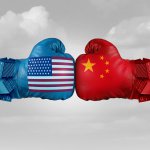The end of LinkedIn in China? Why InCareer couldn’t survive

In 2014, Microsoft-owned LinkedIn started a Chinese-language version of its website in China, charting a path from which its peers, including Facebook and Google, had shied away. Yet over the years, it did not get any easier for the networking platform, as challenges for foreign and domestic social media platforms multiplied amid a ballooning censorship program.
By 2021, LinkedIn decided to shut down its flagship networking service in China, and to no-one’s great surprise, the Microsoft-owned networking platform cited compliance issues and a “significantly more challenging operating environment” among the reasons for its decision. At that point, two years ago, LinkedIn had 53 million users in China, making up about 7% of its total user base.
But it was only a partial exit for LinkedIn. Instead, the networking platform planned to replace the Chinese version of its website with a new job-board service called “InCareer,” without any of the social media functions of the full LinkedIn site. On this stripped-back version, Chinese users cannot share posts or news articles.
Fast forward to this week, whenLinkedIn became the latest tech company to announce plans to lay off employees, mainly to rein back costs. The planned layoff would include axing 716 jobs in sales, operations, and support teams to streamline the company’s operations.
The move, announced Monday, will affect around 3.5% of LinkedIn’s approximately 19,000 employees worldwide. Unfortunately, some of the layoffs will also result from the closure of InCareer. LinkedIn chief executive Ryan Roslansky wrote in a letter to employees on May 8 that the 716 job cuts globally would include China’s product and engineering teams.
“Though InCareer experienced some success in the past year thanks to our strong China-based team, it also encountered fierce competition and a challenging macroeconomic climate,” he said in the message. In other words, LinkedIn is once again paring down its operations in China, further exemplifying the challenges of running a foreign business in the country.
Just two months before this week’s update, LinkedIn was summoned by the country’s internet regulator in March and was ordered to clean up its online content. The same month, the company said it was “temporarily pausing new member sign-ups for LinkedIn China” as it tried to become compliant “with local law.”
To date, InCareer still retained a limited messaging function, and its closure will mean foreign businesses and investors will have fewer tools to monitor their China operations. In a separate Chinese letter to clients published on the social media platform WeChat, LinkedIn said InCareer would shut down on August 9, 2023.
Since the launch of InCareer, the app has deteriorated far behind rival domestic platforms. According to market research firm Analysys, it had 959,600 monthly active users in March. In comparison, other Chinese online recruitment platforms, including 51job, had 18.5 million users that month, Boss Zhipin had 17.3 million, and Liepin had 6.7 million.
What’s next for LinkedIn in China?
Roslansky’s note to employees highlighted that LinkedIn would focus on its Chinese strategy of assisting companies operating in China to hire, market, and train abroad. “This will involve maintaining our Talent, Marketing, and Learning businesses while phasing out InCareer, our local jobs app in China, by August 9, 2023,” he added.
He admitted that InCareer also encountered fierce competition and a challenging macroeconomic climate. “Mohawk and Jian will convene an all-hands meeting with our China-based colleagues in the coming hours to discuss the implications of these changes, including the discontinuation of product and engineering teams in China and the downsizing of corporate, sales and marketing functions,” he concluded.










